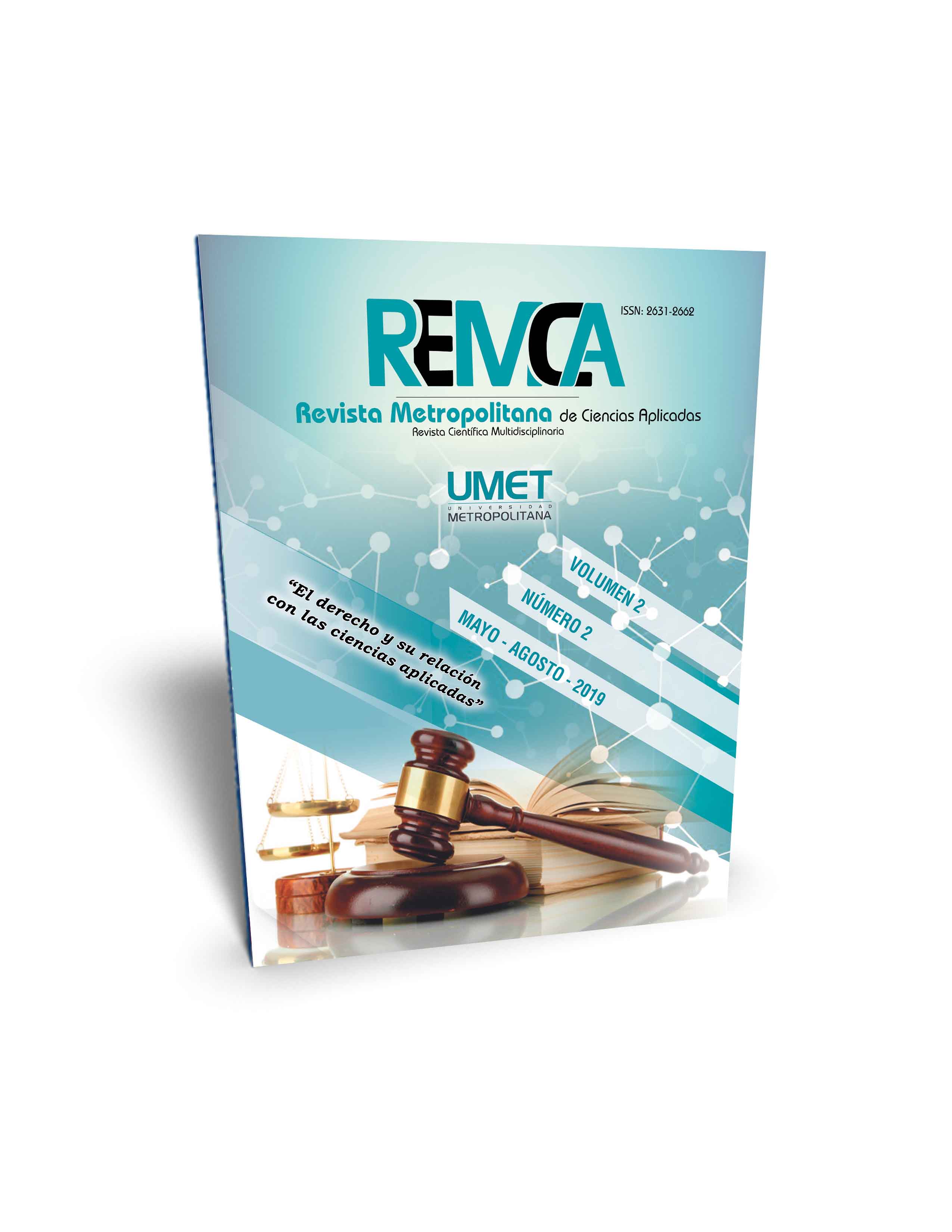Approval and application of the Comprehensive Organic Law to prevent and eradicate violence against women
DOI:
https://doi.org/10.62452/xjjwmp24Keywords:
Effects, law, violence, genderAbstract
The objective of this article is to analyze the Comprehensive Organic Law to Prevent and Eradicate Violence Against Women in Ecuador, published on February 5, 2018, to assess the significance of social and political effects on Ecuadorian citizenship, through the study of the position of the main opposition groups, in the process of their approval. For its development the tools offered by the Legal Sociology were used, the methods used from the theoretical point of view were: the dialectic, the analytical-synthetic, the inductive-deductive, the comparative historical method, the legal exegetic, and the method of Comparative law. The main results are related to the aforementioned law is oriented towards the prevention and eradication of violence against women and not gender, in addition to social and religious uprisings contrary to the incorporation of terms such as "gender mainstreaming" then of all marches and public demonstrations, achieved by presidential decree these were eliminated.
Downloads
References
Castellanos, G. (2002). Breve meditación sobre cuerpo y vestido, género y sexo. Cali: Universidad del Valle,
Comisión Económica para América Latina. (2016). Agenda 2030 y los Objetivos de Desarrollo Sostenible. Una oportunidad para América Latina y el Caribe. Santiago de Chile: CEPAL.
Chile. Biblioteca del Congreso Nacional. (2016). Leyes integrales de violencia contra las mujeres en América Latina: el caso de Uruguay. Recuperado de https://www.bcn.cl/observatorio/americas/noticias/leyes-integrales-de-violencia-contra-las-mujeres-en-america-latina-el-caso-de-uruguay
Ecuador. Corte Nacional de Justicia (2019). Resolución No. 11-2018. Recuperado de http://www.cortenacional.gob.ec/cnj/images/pdf/resoluciones/2018/18-11%20Competencia%20Ley%20contra%20violencia%20mujer.pdf
Ecuador. Consejo Nacional para la Igualdad de Género. (2014). Análisis de los Resultados de la Encuesta Nacional sobre Relaciones Familiares y Violencia de Género contras las Mujeres. Recuperado de https://www.unicef.org/ecuador/Violencia_de_Gnero.pdf
Ecuador. Diario El Universo. (2017). Rechazo a proyecto de ley origina llamado a marchas. Recuperado de https://www.eluniverso.com/noticias/2017/10/07/nota/6418507/rechazo-proyecto-ley-origina-llamado-marchas
Goyas, L., Zambrano, S., & Cabanes, I. (2018). Violencia contra la mujer y regulación jurídica. Díké Revista de investigación en Derecho, Criminología y Consultoría, 140. Recuperado de http://www.apps.buap.mx/ojs3/index.php/dike/article/view/634
López, I., & Sierra, L. (2001). Integrando el análisis de género en el desarrollo. Manual para técnicos de cooperación. Madrid: Instituto Universitario de Desarrollo y Cooperación.
Organización Mundial de la Salud. (2002). Informe mundial sobre la violencia y la salud. New York: OMS.
Organización de Naciones Unidas. (1979). Convención para la Eliminación de Todas las Formas de Discriminación contra la Mujer. Recuperado de http://www.corteidh.or.cr/tablas/a12000.pdf
Organización de Naciones Unidas. (1994). Convención Belem do Pará. Belem do Pará: ONU.
Rivera, M. (2001). La violencia contra las mujeres no es violencia de género. Estudis Feministes, 21. Recuperado de https://www.rebelion.org/hemeroteca/mujer/031111garretas.htm
Downloads
Published
Issue
Section
License
Copyright (c) 2019 Estefanny Yomayra Guzmán Véliz, Julia Alejandra Vaca Murgueitio, Lianet Goyas Céspedes, Libertad Machado López (Autor/a)

This work is licensed under a Creative Commons Attribution-NonCommercial-ShareAlike 4.0 International License.
Authors who publish in Revista Metropolitana de Ciencias Aplicadas (REMCA), agree to the following terms:
1. Copyright
Authors retain unrestricted copyright to their work. Authors grant the journal the right of first publication. To this end, they assign the journal non-exclusive exploitation rights (reproduction, distribution, public communication, and transformation). Authors may enter into additional agreements for the non-exclusive distribution of the version of the work published in the journal, provided that acknowledgment of its initial publication in this journal is given.
© The authors.
2. License
The articles are published in the journal under the Creative Commons Attribution-NonCommercial-ShareAlike 4.0 International License (CC BY-NC-SA 4.0). The terms can be found at: https://creativecommons.org/licenses/by-nc-sa/4.0/deed.en
This license allows:
- Sharing: Copying and redistributing the material in any medium or format.
- Adapting: Remixing, transforming, and building upon the material.
Under the following terms:
- Attribution: You must give appropriate credit, provide a link to the license, and indicate if any changes were made. You may do this in any reasonable manner, but not in any way that suggests the licensor endorses or sponsors your use.
- NonCommercial: You may not use the material for commercial purposes.
- ShareAlike: If you remix, transform, or build upon the material, you must distribute your creation under the same license as the original work.
There are no additional restrictions. You may not apply legal terms or technological measures that legally restrict others from doing anything the license permits.




